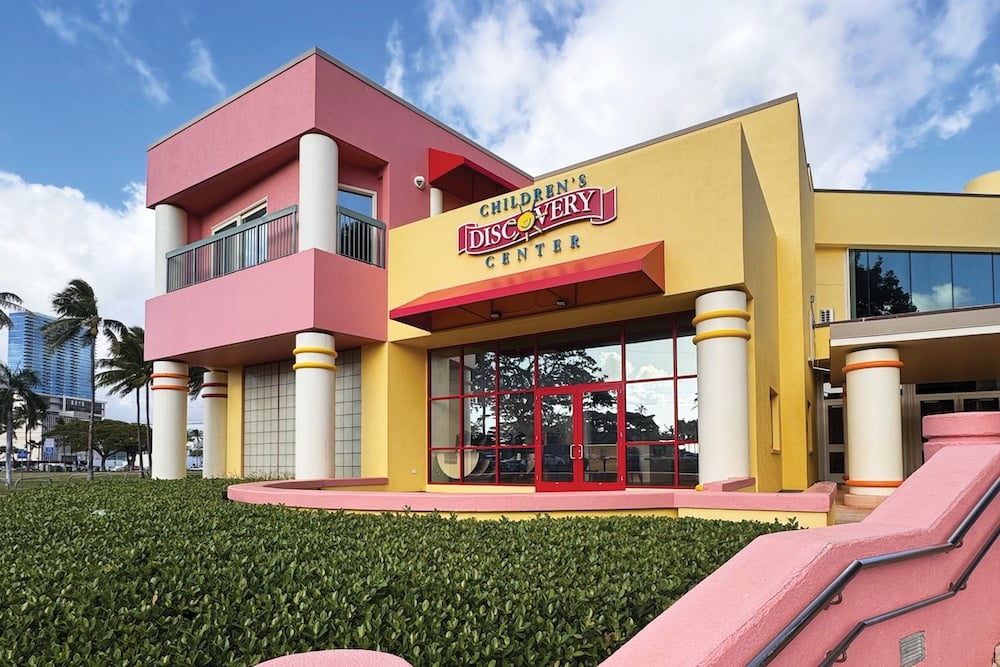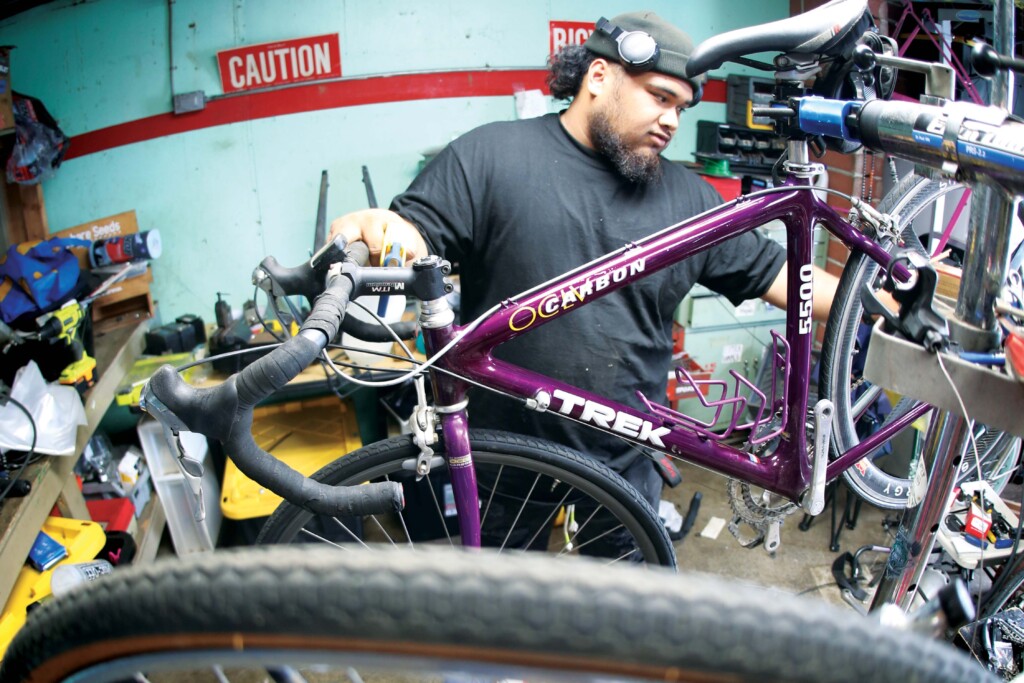Best School System in North America

Mike Strembitsky launched an education revolution in the northern Alberta city of Edmonton in the 1960s and, today, many people consider it the best public school system in North America. It has inspired many districts across the United States to copy its reforms – especially giving financial and operating independence to individual schools. In 2001, the American Association of School Administrators devoted a whole issue of its journal to exploring the Edmonton way.
Strembitsky, now an education consultant and part-time resident of Maui, helped Hawaii leaders develop the idea of School/Community-Based Management and the state’s Reinventing Education Act of 2004. However, Hawaii only took baby steps toward the Edmonton model – and never achieved the same successes.
In this exclusive interview, Hawaii Business talks to the former school superintendent about treating students like customers, granting individual schools autonomy and persuading unions to accept the changes.
How did the transformation in Edmonton begin?
The system had been organized around departments – silos – and the function of a silo was to keep everyone happy in that silo. Not one single silo was responsible for the education of a child. The system didn’t make sense at the school level.
But the minute you ask, “How are schools performing?” the focus shifts. So the big thing for me was to align the resources with those responsible for the results. Therefore, if the schools are held accountable for results, then the schools should control all of the money. People today still can’t believe that in most jurisdictions less than 5 percent of decisions are made at the school level and the rest are made at the district level.
In Edmonton, the decisions over about 92 cents of every dollar, excluding debt retirement and transportation, are made at the school level. For transportation, we give the money to the parents. With no boundaries and kids going every which way, many students did not ride buses. So those that did were subsidized with monthly bus passes, which saved greatly on transportation costs. The passes also worked for city buses – so kids could ride 24/7 to extracurricular events.
What were the first steps?
We picked seven schools to pilot these ideas and said, “We’ve all heard all the criticism about how the system isn’t working, so, if given the chance, how would you put it together just for your school? What is it you need for schools to make things work better?” We literally cut them free from the system – and they operated beautifully. We did this with only a small number of schools because we didn’t know if it would work. One of the things we found is it freed them from the frustration of going to the central office and always being turned down. We helped them reinvent themselves, but they needed to know how much money they had to spend. Before that they had no idea. Later we found out there were great disparities – and no clear rationale – in the way resources were allocated. It depended on who the principals were, who they knew in the central office. If you had people who knew how to milk the system, then the school got a lot more. It was the old boys’ club.
What else did the pilot project reveal?
For those seven schools, the success was clear. One, they managed their budgets. Two, they started to take on issues they had never faced before and took on ownership at the school level. They felt responsible for how the money was used and being able to justify it. For instance, when they took over handling their own utility money, they were able to save money and yet no one felt the schools were too cold in winter.
In fact, those seven schools went hog wild. They even took on maintenance. They said, “We can’t draw the line between small and large items, so we want it all. And if the boilers blow we’ll look after them at the school level and pay them off over several years.” But that’s where the rules do come in. All the maintenance had to be performed under our people or bid out. So they had to follow those system rules. They could make the decisions as long as they lived within their budgets. Previously, no school had been asked to live within its budget. By the end of the first year we knew we had a winner. We then gave Central a year to get ready to make the change systemwide. By the fourth year after its adoption, everyone had embraced the change.
Any other radical changes that made a big difference?
We allowed open enrollment (parents can enroll their children at any school in the district that has room for them). It’s important for a couple of reasons. Schools take on ownership for their “clients,” the kids. I remember one principal who was very rigid, arbitrary and didn’t have good listening skills. In the first year he lost 175 kids to the neighboring school. The next year he lost 75. The school with all the new kids wanted portables because it was over capacity, so I said, “Why don’t you lease space in the empty school?” By the third year a reversal started to take place as that rigid principal accepted that he had to serve a customer. Under the previous system, you didn’t view the students as customers but as inmates.
How do you get people to accept change?
You align the resources around the entity responsible for results. If your people are not behaving the way you want them to behave, rather than trying to change the people, you should change the organization and thank the people for letting you know the organization was not working. You can command people’s presence but not their performance. So to change, you give them the responsibility. When we wanted to go districtwide with this new system, the CFO said, “You want to give the money to the bank robbers, the principals?” I said, “You’re half right; I want to make the bank robbers into bank managers.” The only people who are responsible are the people given responsibility. It makes such a difference when everyone is together around a common goal, the performance of that school.
What was the impact on the community and the economy?
When I went to work as a consultant in Washington, D.C., polls showed that public concern over education (in Edmonton) was rated at just 6 percent compared with around 40 percent in D.C. The community was no longer worried about how its children were being educated. A quality school system is now a given.
Graduation rates aren’t an issue. That means students are going on to college and careers.
How do you know if you are succeeding?
We had to develop our own instruments to measure success – we didn’t really have any. But we began to see scores improving markedly. Every year there are also surveys – of the students, of the teachers and staff, of the parents. Those results are available in every school and at the district level so prospective parents can shop for the school they like and know how it’s rated. Even students in the elementary grades are surveyed, with questions like: “Are people in the office nice to you?” “Do you feel the teacher likes you?” “Does your teacher help you when you ask questions?” “Do you feel safe at school?” Things like that. One of the questions we ask parents on the surveys is, “Are you satisfied with the opportunity for interscholastic sports?” If there are no teams in a school but it still gets a high satisfaction rating, we believe that school community has accepted the trade-off – forsaking athletics for
other things.
How much do the schools emphasize athletics?
Schools offer what their individual communities want. And that is decided jointly by parents, teachers, students and staff. For instance, if your school doesn’t have a football team, you can try out for one at a school that does. Kids can try out for any one of the teams at any of the high schools in the city. We even hit on the idea of schools having two teams in the same sport if there is a lot of demand and that’s what they chose. But we also had a high school where super-elite marks are required. It didn’t have a gym. But its program is advertised on the basis of that, so if you came to that school you knew that, and if you wanted sports you tried out elsewhere.
What about private or religious schools? Do they siphon off the best students?
The public system is so good that private schools have diminished. And religious schools can be part of the public system, as long as religion is not taught during the school day. So they can also exist within the public system. As well, a school community has a broad option of developing just exactly what it wants to look like. Alternative programs, such as French immersion, a Ukrainian bilingual school were two of the first. But choices soon became even broader, and included a group of Christian schools and a Hebrew language school. Public education should be able to encompass everybody. They pay their taxes so we should be able to serve them.
What happens when a school continually loses enrollment?
As superintendent, it was my job to see that our facilities were balanced. If we had a school losing enrollment, the best way to get it up was a good principal who could draw good teachers and draw students back into the school. The end result was that everyone in the school was trying to do their level best. That’s very different than dissipating your energies in wheel-spinning and complaining about the system.
Change is difficult for many people. How did you get the people at the central office to give up control?
In bringing about change you have to look at getting a community of support. We didn’t do it by dictatorial order. Our unions were very strong and we had to make sure that what we did was work with unions, work with our people and get a high degree of buy-in. In working with the central office, one of the keys was communication and keeping everyone informed of what is being done. With the unions we told them everything we were doing. We did not ask them to approve it. We said, “We’re trying something and if it works, great. And if not, we’ll abandon it.” I’ve learned that when you’re going to make a change of this size, it’s very important that you honor the systems – the new one – and those working their buns off to make the current one work. So I felt if we guaranteed that everyone would have a job – though the jobs may change – that would lower the resistance. If it did, it didn’t feel any different. Most people are interested in: “What’s in it for me?” So you talk about what’s in it for them because people need to be reassured. Therefore, making them aware of the plans – and to stay ahead of the rumors – was important.






